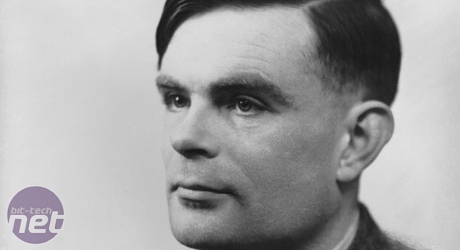
The Search For Artificial Intelligence
In the pale light of a laboratory, a white humanoid quietly contemplates a series of objects. A toy car is held up. "Toy car," the robot says, with barely a pause. For decades, the concept of a machine that could not only recognise objects, but could also be taught to learn the shapes and distinctive features of new ones, was the preserve of SF writers like Isaac Asimov.
But in 2005, fiction became a reality when Japanese scientists created Asimo (an acronym which stands for Advanced Step in Innovative MObility), a plastic-shelled humanoid standing some four feet tall and capable of recognising objects, faces, hand gestures and speech.
While robots and benevolent computers have existed in literature and philosophy for centuries, it was only in the years following World War II that artificial intelligence began to move from the realms of science fiction to reality - and it all began in England, with a quiet game of chess.
The Genesis If AI
English mathematician Alan Turing, whose code breaking work at Bletchley Park played an essential part in WWII, was a key figure in the early days of computer science. In his lectures and books, Turing put forward his theory of what could be defined as an 'intelligent computer' - now commonly known as the 'Turing test' – which posited that, if a machine could communicate convincingly enough to fool a casual observer (over a teletype machine in the mid-20th century, and via, say, Skype today), then it could be considered artificially intelligent.

With computer science still in its infancy, Turing recognised that the possibility of a machine capable of conversation was still decades away. Instead, he concentrated on creating a program that could play chess. Lacking a sufficiently powerful computer, Turing wrote the program by hand. In 1952, he tested the routine against a human opponent, Alick Glennie, with Turing acting as the CPU, with each move taking him half an hour to process. The program lost within 29 moves.
Similarly, in 1952, American scientist and engineer Arthur L Samuel created a chequers programme for the IBM 701, the first commercial computer. This apparently trivial pursuit actually had a useful purpose: by 'teaching' a computer to play a simple strategy game like chequers, he hoped to create a program which could be used to solve other, more complex problems.
Turing and Samuel's work was a stunning demonstration of the possibilities of computer programming. Suddenly, computers were capable of more than just solving complicated sums.
In the pale light of a laboratory, a white humanoid quietly contemplates a series of objects. A toy car is held up. "Toy car," the robot says, with barely a pause. For decades, the concept of a machine that could not only recognise objects, but could also be taught to learn the shapes and distinctive features of new ones, was the preserve of SF writers like Isaac Asimov.
But in 2005, fiction became a reality when Japanese scientists created Asimo (an acronym which stands for Advanced Step in Innovative MObility), a plastic-shelled humanoid standing some four feet tall and capable of recognising objects, faces, hand gestures and speech.
While robots and benevolent computers have existed in literature and philosophy for centuries, it was only in the years following World War II that artificial intelligence began to move from the realms of science fiction to reality - and it all began in England, with a quiet game of chess.
The Genesis If AI
English mathematician Alan Turing, whose code breaking work at Bletchley Park played an essential part in WWII, was a key figure in the early days of computer science. In his lectures and books, Turing put forward his theory of what could be defined as an 'intelligent computer' - now commonly known as the 'Turing test' – which posited that, if a machine could communicate convincingly enough to fool a casual observer (over a teletype machine in the mid-20th century, and via, say, Skype today), then it could be considered artificially intelligent.

Alan Turing
With computer science still in its infancy, Turing recognised that the possibility of a machine capable of conversation was still decades away. Instead, he concentrated on creating a program that could play chess. Lacking a sufficiently powerful computer, Turing wrote the program by hand. In 1952, he tested the routine against a human opponent, Alick Glennie, with Turing acting as the CPU, with each move taking him half an hour to process. The program lost within 29 moves.
Similarly, in 1952, American scientist and engineer Arthur L Samuel created a chequers programme for the IBM 701, the first commercial computer. This apparently trivial pursuit actually had a useful purpose: by 'teaching' a computer to play a simple strategy game like chequers, he hoped to create a program which could be used to solve other, more complex problems.
Turing and Samuel's work was a stunning demonstration of the possibilities of computer programming. Suddenly, computers were capable of more than just solving complicated sums.

MSI MPG Velox 100R Chassis Review
October 14 2021 | 15:04








Want to comment? Please log in.